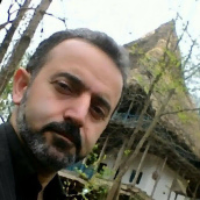The Typology of Urban Façade Texture (in an approach to shape scrutiny) (Case study of Imam Khomeini Square in Tehran)
Author(s):
Abstract:
In studying the architectural evolutions, it is necessary to scrutinize the climatic, shape and historic typologies. Reviewing these studies clarifies the researchers view in using the typology as a type methodology in designing different architectural properties such as the plan, mass, form, and space. For instance, Olgy reviewed and categorized architecture in terms of architectural formation due to climatic features and Durand and Krier focused on the geometric aspects of the plans. Therefore, this paper tries to offer a typology of facades as a significant aspect of architectural design since the absence of defining a proper process in façade design has led to the development of an unpleasant cityscape and inconsistent individualistic façade design all over the city.
Therefore, this paper queries the geometric and typological features in the facades of valuable buildings (traditional buildings) during different periods. In this regard, this research is conducted assuming that the correct identification and recognition of façade typology and its re-establishment in the contemporary works can hinder insipidity and chaos in cityscape while preserving the historical-cultural authenticity of the facades. Thereafter, the research is continued by drawing the basic shapes (square, triangle, and circle) according to Durands and Kriers - by whom these shapes were introduced as the basic shapes in the typology of shapes viewpoints as well as applying changes to the axes, vertices, and sides of these shapes in the opinion of Durands and Kriers transformation principles in shapes in order to find the transformation trajectory in these shapes. Hence, the building facades around Imam Khomeini Square - which is a significant urban, social, political, cultural, and historical place- in Tehran city are scrutinized by library research (books and articles) and in analytical comparative research method by studying the facades (pictures and illustrations) using 9 statistical populations from Qajar, Pahlavi I, Pahlavi II and the contemporary era (two slides from each of the four sides of the square on average). Eventually, it was concluded that the most of the geometric patterns used in the facades of the surrounding monuments during Qajar period were formed by combination or application of simple shapes such as circles and squares based on the center of the circle or in the process of repetition in terms of geometry, ornaments, and apertures. These terms during Pahlavi I period have appeared in form of triangular shapes and acute sections in a variety of combinations with a circle and a square. As for the Pahlavi II period, the influence of the principles of Western architecture led into the use of simplicity and maximum prevention in decorations in various constructions of different functions. As a result, the geometric patterns used in this period were mostly squares and the products from the square rotation in angles.
Therefore, this paper queries the geometric and typological features in the facades of valuable buildings (traditional buildings) during different periods. In this regard, this research is conducted assuming that the correct identification and recognition of façade typology and its re-establishment in the contemporary works can hinder insipidity and chaos in cityscape while preserving the historical-cultural authenticity of the facades. Thereafter, the research is continued by drawing the basic shapes (square, triangle, and circle) according to Durands and Kriers - by whom these shapes were introduced as the basic shapes in the typology of shapes viewpoints as well as applying changes to the axes, vertices, and sides of these shapes in the opinion of Durands and Kriers transformation principles in shapes in order to find the transformation trajectory in these shapes. Hence, the building facades around Imam Khomeini Square - which is a significant urban, social, political, cultural, and historical place- in Tehran city are scrutinized by library research (books and articles) and in analytical comparative research method by studying the facades (pictures and illustrations) using 9 statistical populations from Qajar, Pahlavi I, Pahlavi II and the contemporary era (two slides from each of the four sides of the square on average). Eventually, it was concluded that the most of the geometric patterns used in the facades of the surrounding monuments during Qajar period were formed by combination or application of simple shapes such as circles and squares based on the center of the circle or in the process of repetition in terms of geometry, ornaments, and apertures. These terms during Pahlavi I period have appeared in form of triangular shapes and acute sections in a variety of combinations with a circle and a square. As for the Pahlavi II period, the influence of the principles of Western architecture led into the use of simplicity and maximum prevention in decorations in various constructions of different functions. As a result, the geometric patterns used in this period were mostly squares and the products from the square rotation in angles.
Keywords:
Language:
Persian
Published:
Bagh-e Nazar, Volume:14 Issue: 53, 2017
Pages:
15 to 32
magiran.com/p1760300
دانلود و مطالعه متن این مقاله با یکی از روشهای زیر امکان پذیر است:
اشتراک شخصی
با عضویت و پرداخت آنلاین حق اشتراک یکساله به مبلغ 1,390,000ريال میتوانید 70 عنوان مطلب دانلود کنید!
اشتراک سازمانی
به کتابخانه دانشگاه یا محل کار خود پیشنهاد کنید تا اشتراک سازمانی این پایگاه را برای دسترسی نامحدود همه کاربران به متن مطالب تهیه نمایند!
توجه!
- حق عضویت دریافتی صرف حمایت از نشریات عضو و نگهداری، تکمیل و توسعه مگیران میشود.
- پرداخت حق اشتراک و دانلود مقالات اجازه بازنشر آن در سایر رسانههای چاپی و دیجیتال را به کاربر نمیدهد.
In order to view content subscription is required
Personal subscription
Subscribe magiran.com for 70 € euros via PayPal and download 70 articles during a year.
Organization subscription
Please contact us to subscribe your university or library for unlimited access!




